#hermopolis
Photo




#acorigins#assassin's creed#assassin's creed origins#temple of thoth#hermopolis#gamingedit#photomode#virtual photography
50 notes
·
View notes
Text
On the Symbolism of the Ogdoad

It's been my experience that buried underneath patterns, beliefs, and interpretations there are core truths. The Greeks called them Forms or First Principles, the Egyptians knew them as the Netjeru, among the Teutons they were the Runes, and to the Hebrews they were the Sefirot. Based on my own experiences I am of the firm belief that these Principles are, in a sense, animated and alive. Being able to hear and see them takes time and sacrifice. I can say it feels like a blessing to reach out and touch even one of them.
The Netjeru are forces of nature within the spectrum of Cosmos and Chaos. They are embodied within both the physical universe and the human psyche. They are both primordial and universal, scientific and spiritual. The nature of their involvement with both objective and subjective reality far transcends that of third-dimensional human beings. The Egyptian word netjer or neter was carried on through the ages as the Coptic noute, the Latin natura, and finally the English nature.
In Egyptian cosmology, the Ogdoad were four pairs of Netjers conceptualized to represent different aspects of the primeval chaos. They were at the heart of the Hermopolitan cosmology. They were believed responsible for the inundation of the Nile and the rising of the sun. The forces of chaos were an essential part of the cosmic circuit. They were first mentioned in religious texts during the Middle Kingdom (2040-1640 B.C.E.). The original mound of creation (depicted as the Benben stone, a lotus flower containing the child Ra, or the child Ra hatching from the cosmic egg) was said to rise from the chaotic waters. Ra represents both the physical sun but also the creative principle as a whole. The names of the Ogdoad are:
Nun and Naunet (Primeval Ocean and Primeval Sky)
Kek and Kauket (Obscurity and Illumination)
Amun and Amunet (the Hidden One and the Revealed One)
Heh and Hauhet (Infinity and Boundaries)
The males were depicted as frogs or frog-headed men (as very prolific animals, frogs symbolize new life) whereas the females were serpents or serpent-headed women (often portrayed as spirals, serpents symbolize the latent creative force in the universe). The Egyptians chose well to use these animals as representations of the pre-creation state, thinking they would be comfortable in the primeval ooze. The Ogdoad are equivalent to the four fundamental interactions of the universe (the weak nuclear force, the strong nuclear force, gravity, and electromagnetism).
Nun was the primeval ocean and His consort Naunet was the sky above it. In the pre-creation state Nun was the chaotic primeval matter and Naunet was the primeval space. In the created universe Nun was what the Egyptians believed to be the watery firmament surrounding the world, similar to the Greek titan Okeanus, and in older texts, Naunet became the anti-sky which Ra must traverse every night in the Duat.
Kek and Kauket represented the awakening of the Universal Mind from the darkness enveloping the primeval ocean. Egyptians associated night with the chaotic energies and forces. Kek and Kauket were known as "the bringer-in of the light" and "the bringer-in of the night", respectively, indicating both their dominion over the hours of twilight and the dual-spiral nature of consciousness. Kek is that which is perpetually beyond the reach of the intellect and Kauket is the embodiment of continually pushing back barriers—of Opening the Way.
Amun and Amunet were Wind and Air, the dynamic elements of chaos. Creation cannot be explained from within, only from without, i.e. the Creator and the created universe are not one and the same. There must be an external force underlying creative efforts. This has been known by many cultures as “the breath of life” which animates inert or dead matter. The Egyptians knew this force as Amun, the Netjer of wind also known as the Hidden One. Amun represents the occult force underlying creation.
Heh and Hauhet symbolized the dynamic relationship between Matter and Spirit. One knows a compounded horizon, the other bears the limitless expanse of the primeval waters, knowing neither the impression of space nor time.
Most ancient cultures (as well as some that survive to this day) lived by the understanding of the cyclicality of nature, which can be observed within the succession of seasons. The universe was perceived as dynamic and animated rather than mechanistic and dead. The wisdom that many these days perceive as baseless or quaint was the result of centuries spent working the earth and observing the sky. The ancients developed mystery plays to illustrate the cosmic dance, the eternal conflict between the forces of cosmos and chaos. The mystery plays, rites, and festivals were more than just religious affairs to the ancients; they were acts of involvement with the cosmic crisis (often portrayed by the disappearance and rebirth of the sun).
The sun symbolizes cosmic order. The word "order" often sounds sterile and mechanistic but, rather, is taken to mean balance or regulation. The glaring heat of summer and the brittle cold of winter symbolically contributes to the death of the earth. From these chaotic seasons come longer days, renewed vegetation, and new generations of fauna, the cyclicality of creation playing out on the cosmic stage. Should the forces of either cosmos or chaos destroy the other, the outcome will be the same regardless of the victor. The creative principle involves a continuance of transformation through creation and destruction—an alchemy if you will. This has been depicted by many cultures as the world serpent.
The bringing of order and definition to the primeval state was not a sudden or random event but one subject to a greater form of law. The Egyptians knew this as Ma'at, the Greeks as Logos, the Teutons as Ørlög, the Hindus as Ṛta, the Zoroastrians as Asha, and the Lakota peoples as Wakan Tanka or the Great Mystery. In the Judeo-Christian tradition, it is referred to as the Word of God. Creation is not something that can be explained from within, but only from outside of it or beyond its scope; whence comes the concept of the occult or hidden force underlying creation. This is not something I consider to be a god necessarily but rather an emanation, a permeating force or principle that underlies objective existence. In the microcosm, this would be comparable to the notion of vitality or the animating principle.
Creation is an emanating, dynamic, and ongoing act as opposed to a singular, decisive act. It is the process by which undifferentiated matter, energy, and consciousness are brought to order and definition. It is the transition from subjective being to objective being, from the unconscious to the conscious. In human terms, it is the transition from an unconscious state to one of awareness. It is not the bringing forth of something out of nothing. The necessary elements already exist and the act itself is the forming and re-purposing of chaotic matter or energy into something new. To a person rousing from active sleep, their dream could be considered incredibly real even though it was the product of their unconscious mind attempting to categorize the experiences of the previous day.
Creation is inherently cyclical, continuous, and multidimensional. The experience of it is, by its very nature, transcendental (i.e. beyond oneself). The universe is not static. It is evolving on every scale and in every aspect, very much animated and alive. One of the core Hermetic teachings is that everything in the universe is composed of energy vibrating at an infinite range of frequencies, all of which are susceptible to mental influence.
Inherent in this dynamic process is the reconciliation of opposites, a practical example of which can be found in the interaction between matter and antimatter. The majority of the universe is comprised of plasma with matter and antimatter distributed throughout. When matter (e.g. a negatively-charged electron) and antimatter (a positively-charged positron) collide, they produce a violent reaction—the conversion of matter to energy in the form of an explosion. In doing so, the particles and antiparticles negate each other and return to zero mass with their total energy being redistributed into the surrounding space, transformed into gamma radiation. The universe wastes nothing.
This process was defined philosophically as the dialectic Thesis-Antithesis-Synthesis and portrayed allegorically as Unity-Scission-Reconciliation. This dialectic is observable in nature as the changing of seasons, the life cycles of flora, and the behavior of fauna. It manifests recurrently in human lives as the intricacies of relationships and personal growth, the outreaching of generations, and the evolution of customs, trends, and technology.
The Ancient Egyptians had a way of expressing such relationships and interactions. This was achieved by grouping the Netjeru into dyads, triads, tetrads, etc. These groupings were formulaic, illustrating the interaction between principal forces. For example:
Nun-Ptah-Atum
Nun: undifferentiated matter/energy
Ptah: converting potentia to dunamis
Atum: self-begotten awareness
This triad embodies the scientific basis of Creation in which the undifferentiated, inert state of matter and energy come into being as the physical universe. The Egyptians portrayed the transformative catalyst as Ptah, the patron Netjer of artisans. Ptah is portrayed with His body bound in cloth (representing the dense state of matter, the concealed potentiality underlying creation), often standing on a pedestal or seated on a throne (representing His mastery over universal laws). His hands and head are uncovered (indicating the capacity for action, expression, and intent) and He is often seen holding a staff combining the ankh, was, and djed (symbols of life, sovereignty, and stability).
I am writing a book that focuses on Nun and will occasionally post snippets of it here. Nun is one of the Netjers that I work with and I’ll be writing more about that in my Relationships With The Netjeru series. You would be surprised by the wisdom and friendship to be found in obscure forces of creation.
#kemetic paganism#kemetic#kemeticism#kemetism#egyptian gods#netjeru#egyptian paganism#egyptian polytheism#ancient egypt#ancient kemet#kemetic polytheism#ancient egyptian#ogdoad#nun#ptah#atum#amun#amunet#creative principle#hermopolitan#hermopolis#cosmology#ra#maat#ma'at
6 notes
·
View notes
Text
From Thebes to Amarna, Memphis and Crocodilopolis, here’s all you need to know about the key cities of ancient Egypt.
#Egypt#city#Thebes#Amarna#Nubt#Abydos#Hermopolis#Elephantine#Crocodilopolis#Memphis#Djanet#Alexandria#ancient#history#ancient origins
65 notes
·
View notes
Text

All hail the god Thoth, author of every work on every branch of knowledge!𓁟
📚📖📚
#history#thoth#ancient egypt#kemetic#writing#ancient egyptian history#scribe#egyptian mythology#knowledge#khmunu#hermopolis#ancient history#kemetic gods#egyptology#library#egyptian god#ancient#mythology#divine#hieroglyphics#advisor#ibis#moon#ancient egyptians#nickys facts
8 notes
·
View notes
Photo








Au Louvre-Lens, il y avait une expo fort intéressante : “Champollion - La Voie des Hiéroglyphes”, sur l’homme, son époque, l’image de l’Egypte en Europe avant l’Egyptologie....
En alternance avec le moulage du Zodiaque de Dendéra :
- Nakhthorheb - Hermopolis- Baqlieh, Basse époque, 590 av. J-C.
- couple assis - Nouvel Empire, 1330 av. J-C.
- id.
- ivoire magique - Moyen Empire, 2035-1680 av. J-C.
- fragment de couple royal Aménophis III et Tiy, stéatite - Nouvel Empire, 1380 av. J-C.
#louvre-lens#expo#champollion#la voie des hiéroglyphes#archéologie#égypte#égypte antique#égyptologie#nakhthorheb#hermopolis#baqlieh#moyen empire#ivoire#ivoire d'hippopotame#défense d'hippopotame#amulette#magie#aménophis III#améophis#tiy#stéatite#nouvel empire#dendéra#zodiaque#zodiaque de dendéra
9 notes
·
View notes
Text

Relief with foreign musicians - Met Museum Collection
Inventory Number: 1991.240.13
New Kingdom, Amarna Period, Dynasty 18, ca. 1353–1336 B.C.
Location Information: From Egypt; Probably from Middle Egypt, Hermopolis (Ashmunein; Khemenu); Probably originally from Amarna (Akhetaten)
#Relief with foreign musicians#new kingdom#new kingdom ap#dynasty 18#middle egypt#upper egypt#hermopolis#ashmunein#khemenu#amarna#akhetaten#met museum#1991.240.13#Foreigners#NKAPForeigners
0 notes
Photo
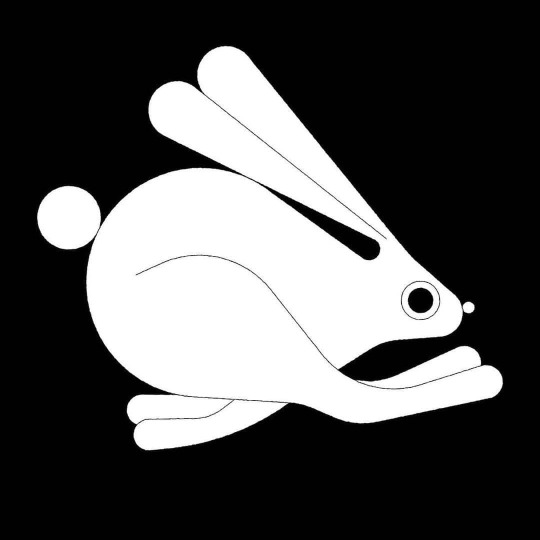
Happy New Year - Year of the #Rabbit 🐇 [ 22.01.2023 ] In #China, The Hare in the Moon is depicted with a mortar and pestle in which She mixes the elixir of immortality. This goddess conceives through the touch of the full moon’s light without the need of impregnation by a male (not to be confused with the “virgin birth” – this goddess is one unto herself) or she conceives by crossing water by moonlight. As the Great Goddess she is the guardian of all wild animals. In #Egyptian myth hares were associated with the moon which was masculine when waxing and female while waning – highlighting the feminine power of yin. Hare headed goddesses and gods can be seen on temple walls. The female is the goddess #Wenet, while the male probably represents Osiris, the son of Isis. #Greek and #Roman mythologies tell us the hare represents love, abundance, and fecundity. Hares were associated with #Artemis, goddess of the wild places and Artemis would not permit young hares to be sacrificed (as some demanded) but left to her protection. Rabbits were also sacred to #Aphrodite the goddess of love and beauty. Carvings of rabbits eating grapes and figs appear on both Greek and Roman tombs symbolizing the transformative cycle of life, death, and rebirth. 🐇🐇🐇🐇🐇🐇🐇🐇🐇🐇🐇🐇🐇 AUnut, alt. #Wenut or #Wenet, is a prehistoric #Egyptian snake goddess. Originally, she had the form of a snake and was called "The swift one". She came from the fifteenth Upper Egyptian province and was worshipped ... capital #Hermopolis (in Egyptian: #Wenu). Later she was depicted with a woman's body and a hare's head. Hare-headed gods and goddesses can be seen on the Egyptian temple walls of #Dendera, where the female is believed to be the goddess #Unut (or Wenet), while the male is most likely a representation of #Osiris (also called #Wepuat or #Un_nefer), who was sacrificed to the Nile annually in the form of a hare. (em China中国) https://www.instagram.com/p/Cnu-nsXAw8L/?igshid=NGJjMDIxMWI=
#rabbit#china#egyptian#wenet#greek#roman#artemis#aphrodite#wenut#hermopolis#wenu#dendera#unut#osiris#wepuat#un_nefer
0 notes
Text
The Ogdoad: When Amun Ruled the Gods of Egypt - Historic Mysteries
The Ogdoad: When Amun Ruled the Gods of Egypt – Historic Mysteries
https://www.historicmysteries.com/ogdoad/

View On WordPress
1 note
·
View note
Text
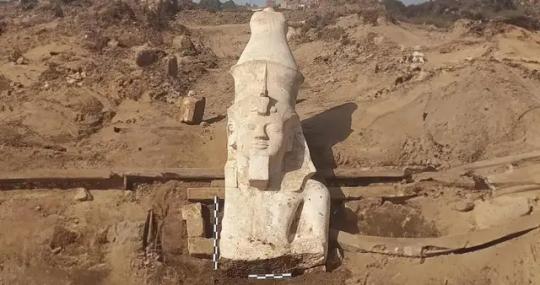
The Long-Lost Top Half of an Enormous Ramses II Statue Found
A German researcher found the lower section of the Egyptian pharaoh’s likeness nearly 100 years ago.
Archaeologists in Egypt have uncovered the upper half of a towering statue of Ramses II, cracking a century-long mystery. Found in the ancient city of Hermopolis (now Ashmunein), the 12.5-foot-tall limestone fragment lines up perfectly with the lower section of a sculpture discovered nearby in 1930.
The ancient statue depicts Ramses in a seated position, adorned with a crown and a headdress topped with a cobra, according to a statement from the Egyptian Ministry of Tourism and Antiquities. The dual crown indicates Ramses’ simultaneous authority over the kingdoms of Upper and Lower Egypt, while the cobra represents royalty, writes the National’s Kamal Tabikha.
The upper area of the back column of the statue is etched with hieroglyphs that list Ramses’ many titles, glorifying the king as “one of ancient Egypt’s most powerful pharaohs,” says Bassem Jihad, head of the excavation team, in the statement, per a translation by Reuters.
Preliminary scans have confirmed that the carved limestone block is a continuation of the lower section of the statue, which was found in the same area in 1930 by German archaeologist Günther Roeder. With its halves combined, the statue would have loomed at a height of nearly 23 feet.
As the third pharaoh of Egypt’s 19th dynasty, Ramses ruled over a sprawling empire that stretched from modern-day Sudan to Syria. During his reign—which spanned 1279 to 1213 B.C.E., making it the second-longest of any Egyptian monarch—he ushered the kingdom into a golden age of power and wealth. Known as Ramses the Great, the pharaoh’s legacy was cemented by a slew of monuments and statues constructed in his name, both during and after his reign.
The joint Egyptian and American dig team originally began its exploration of the Ashmunein area with the goal of discovering a religious complex from Egypt’s New Kingdom era (1550 to 1070 B.C.E.). Though the researchers ultimately stumbled onto something entirely different, they remained pleased with their results.
“Though we have not found the complex we were initially looking for, a statue of such importance is a sign that we are digging in the right place,” Adel Okasha, an antiquities official who oversaw the dig, tells the National.
Next, the team will create a model envisioning what the statue looked like in antiquity, when it was fully intact.
“Not only is it a wonderful opportunity to have a whole other massive statue of the famed king, it also adds to our general understanding and fills gaps in our data on the large corpus of Ramses II’s statuary,” Salima Ikram, an Egyptologist at the American University in Cairo, tells the National. “Through each discovery, we have been able to trace changes in the style during the course of his very long reign.”
By Catherine Duncan.

#The Long-Lost Top Half of an Enormous Ramses II Statue Found#ancient city of Hermopolis#Ramses II#limestone#limestone slabs#ancient artifacts#archeology#archeolgst#history#history news#ancient history#ancient culture#ancient civilizations#ancient egypt#egyptian history#egyptian pharaoh#egyptian art
84 notes
·
View notes
Text

am once again working on my lil cub/scar hc x esmp ancient egyptian au that i started last year some time. i'm nearly 8k words in now for the first part. just figuring out the plot points for the second and third parts so i know where i'm heading once i finish this first bit. like i'm very close to being able to post the first part so. Soon(tm). >_>
#hermitcraft#empires smp#hc x esmp#fanfic#convex#the lost prince au#cubfan135#gtwscar#pixlriffs#pearlescentmoon#mythical sausage#joel smallishbeans#hermopolis = city of hermes#diospolis = city of zeus#this universe actually dates back a decade#in another time and another fandom space#but the stories i wrote for them got very very complicated#and i never quite knew how to resolve the plot#so i never ended up finishing or posting any of it#so i'm repurposing the world for this bc why not lol#i love this world too much to keep it to myself
6 notes
·
View notes
Note
so what does Ma'at do when you're gone?
"She does what she ought to do. Though she was initially not part of this 'plan' of mine, she stops by every now and then. Laura is shocked when she does, as it is rare for me to have guests other than my patients."
He sat down on his office chair, leaning back as the rays of the afternoon warm up his office. Alone, but far from lonely, as evident by the presence of a strange voice asking him questions in his head.
"Though, we both prefer spending our time together elsewhere. We might visit a cafe or a restaurant, and end the evening with a slow drive back home. These moments are rare, but that is expected from the ever-righteous paragon of justice."
Looking around, he had no picture of her, just of his daughter. It was preferred, though, when the mortals knew him to be a single father.
"At times, I find her in my office or in my house without my knowledge. To most people's surprise, she is a bit more playful than one might expect of a goddess like her."

1 note
·
View note
Photo

Shrines in the underground cemetery and catacombs at Tuna el-Gebel dedicated to Egyptian God Thoth in form of Baboon. Khemenu Hermopolis, Thoth cult city.
1K notes
·
View notes
Text



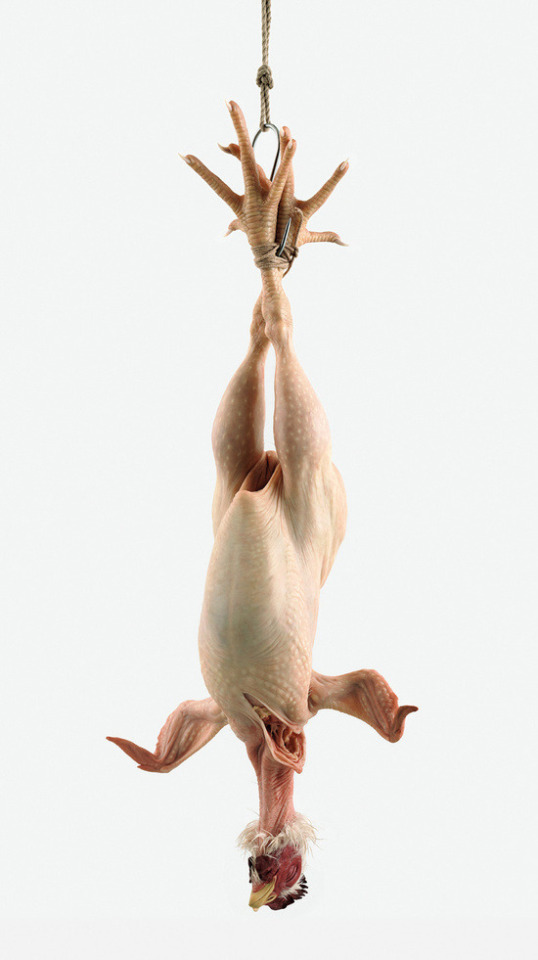
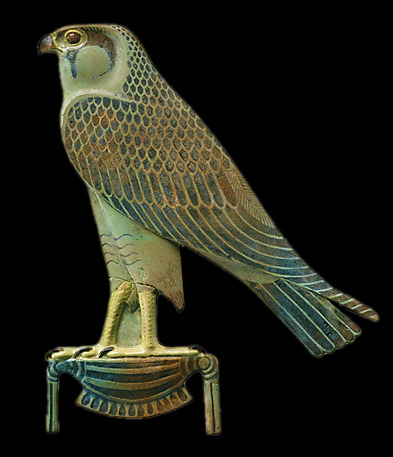


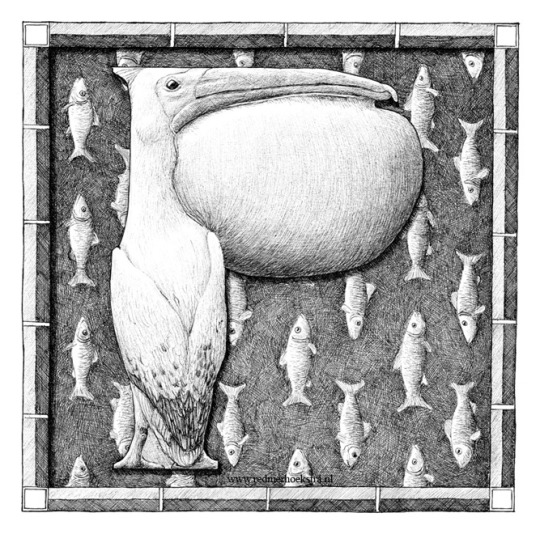
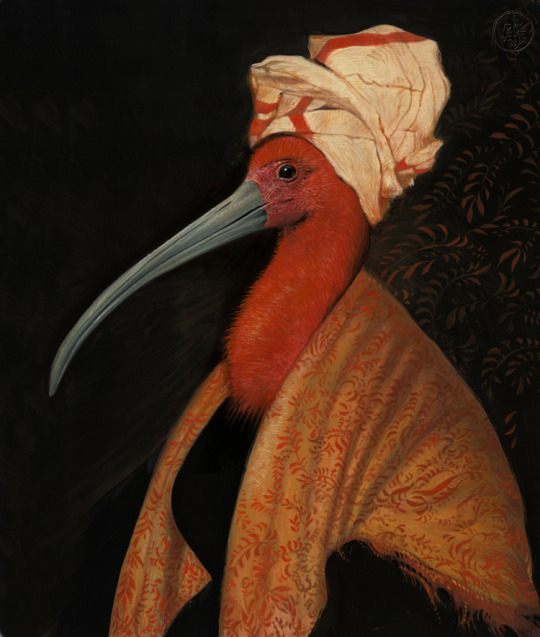
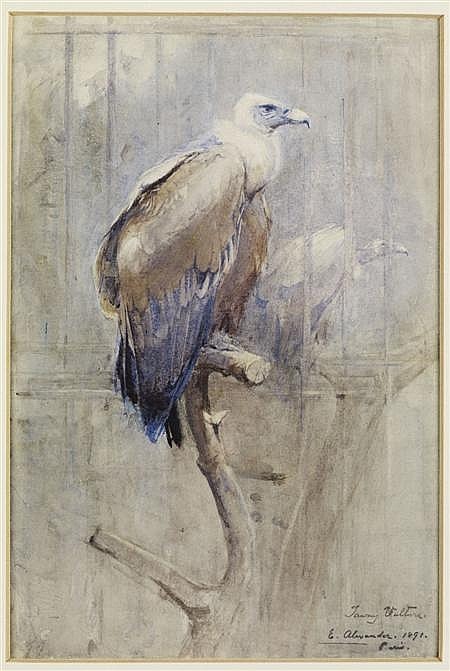
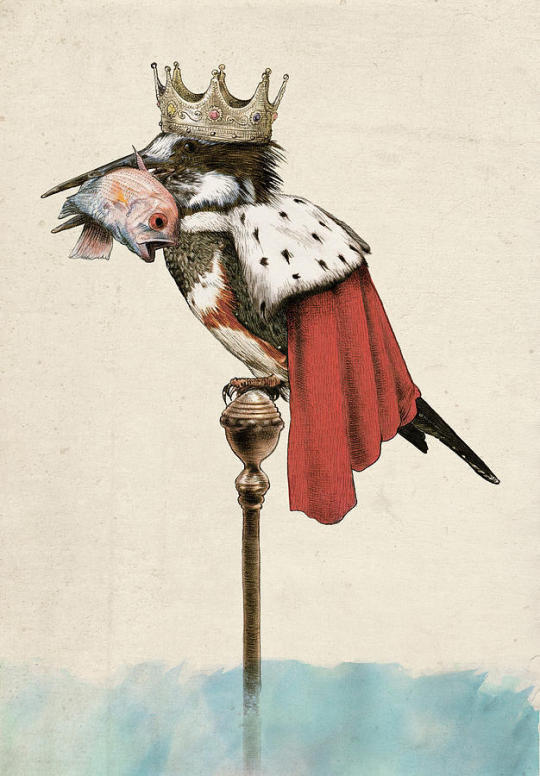
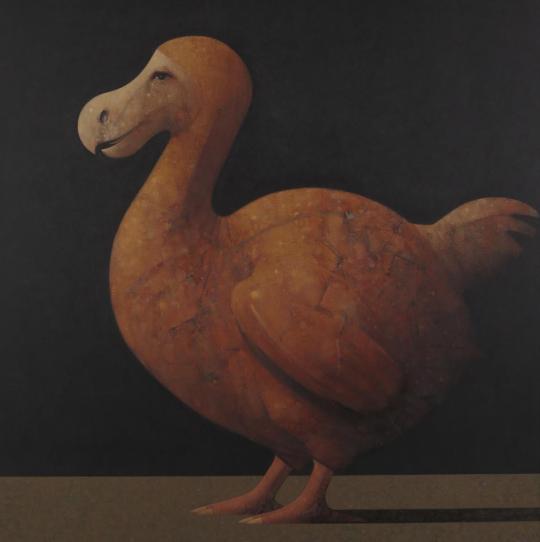
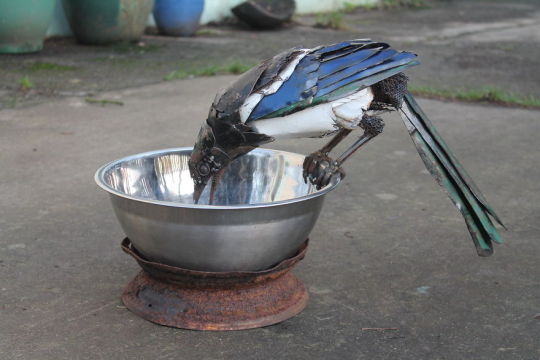

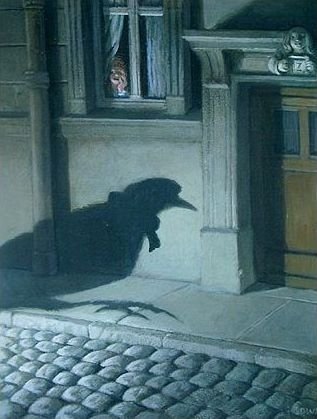
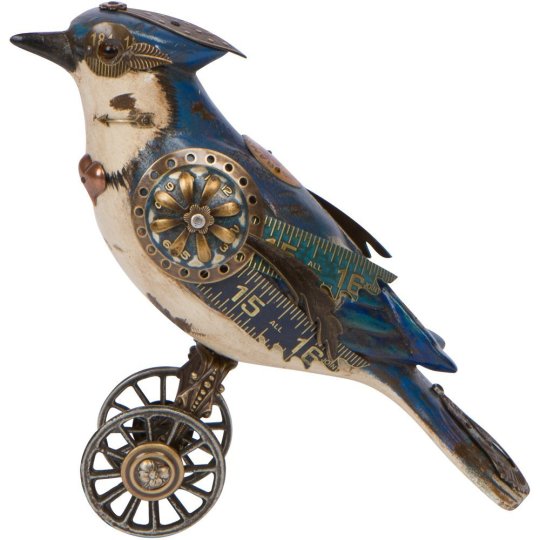
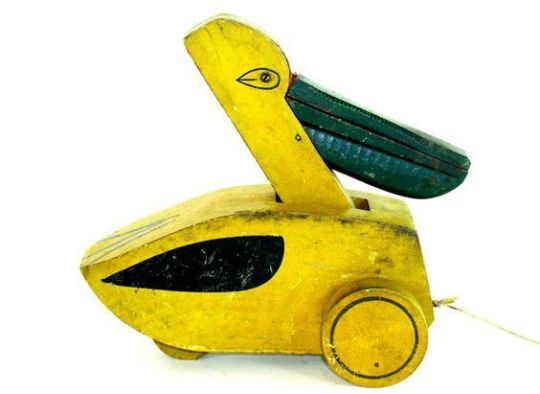
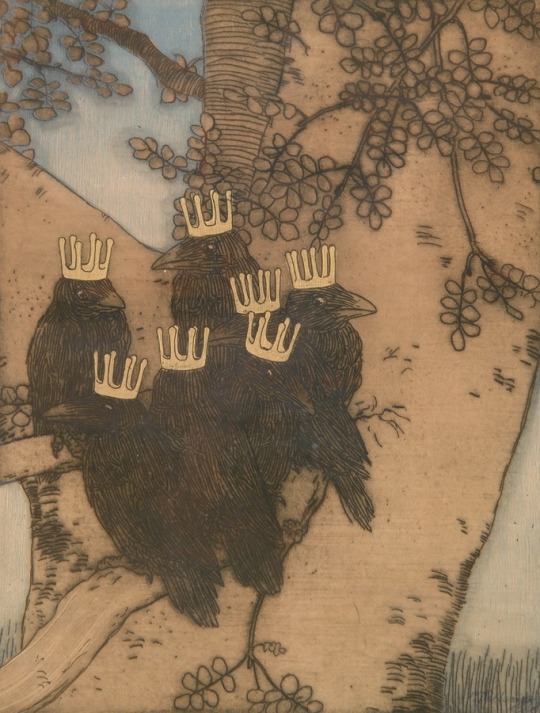
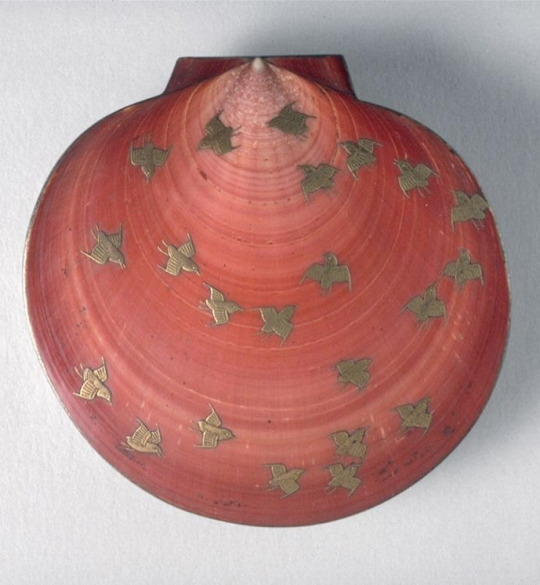
bird painted on ostracon - Thebes, Egypt - c.1479–1458 BCE
Paul Manship - Crowned Crane - gilt bronze on lapis lazuli base - 13 5⁄8 x 7 x 2 7⁄8 inches - 1932
bird & snake - illumination - Beatus of Liébana, Commentaria in Apocalypsin (the ‘Beatus of Saint-Sever’) - Saint-Sever - before 1072
Ron Mueck (Australian, b.1958) Still Life - mixed media sculpture - 2009
Horus the Golden - Horus standing on the hieroglyph for gold - faience and polychrome inlay - Middle Egypt - Hermopolis - Late Period or Ptolemaic Period - 4th century BCE
Utagawa Hiroshige I (Japanese, 1797- 1858)- Jūmantsubo Plain at Fukagawa Susaki - woodblock print - 1856
Adam Binder (British, b.1970) - Wren II - patinated bronze - 2012
Redmer Hoekstra (Dutch, b.1982) - Pelikaan (Pelican) - pencil - 2015
Bill Mayer (American illustrator, b.1951) - Ibis - painting
Edwin John Alexander (Scottish, 1870-1926) - Griffon (Tawny) vulture (Gyps fulvus) - watercolor & gouache - 26 x 17 cm - Paris - 1891
Eric Fan (born in Hawaii, living & working in Canada) - Kingfisher - painting - 2014
John Boyd (England, b.1957) - Dodo Variations IV - painting
J.K.Brown aka John Kennedy Brown (wooarts) (Welsh, b.1979) - Bird - metal-scrap sculpture
René Magritte (Belgian, 1898-1967) - The Idol - painting - 1965
Michael Sowa (German, b.1945) - Die Rückkehr der Zugvögel (The Return of the Migratory Birds) - painting
Mullanium (steampunktendencies) - Blue Jay - mixed media assemblage
Pelican - painted wood toy
Vojtěch Preissig (Czech, 1873-1944) - Seven Ravens - etching - 1900
Incense container with plovers - lacquer, gold, sea-shell - Japan - late Muromachi period (1392-1573)
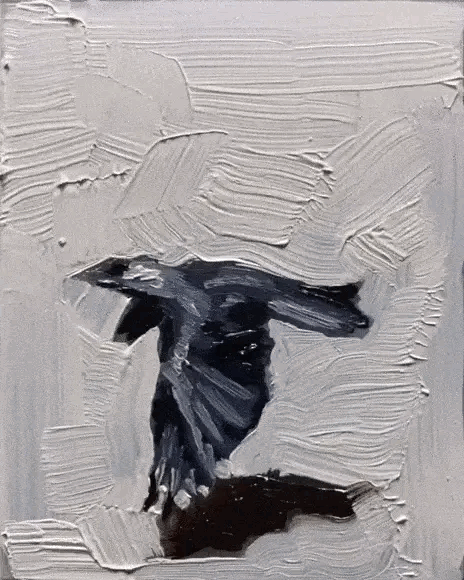
Dilhaar (www.instagram.com/hmdbti/) - flying bird - paintings & gif
“Before I ever started painting and before I even started taking drawing seriously, I was in love with the idea of painted animation. Frame by frame, each painting coordinates with the one before and the one after to create life. I still have a lot to learn and there are a lot of technical things I don’t know and will improve on but I like this start. Forget thoughts, focus on actions. Regarding this specific animation I really love the shapes of the shadow on the ground.” - Dilhaar
#art by others#other's artwork#sculpture#painting#birds#print#toy#illumination#gif#Paul Manship#Vojtěch Preissig#Mullanium#Michael Sowa#René Magritte#J.K.Brown#John Boyd#Eric Fan#Edwin John Alexander#Bill Mayer#Redmer Hoekstra#Adam Binder#Utagawa Hiroshige#Ron Mueck#Egypt#Dilhaar @hmdbti
20 notes
·
View notes
Text
GWitch: As Above, So Below

Hermes Trismegistus is the syncretism of the Greek god Hermes(Roman Mercury) and the Egyptian god Thoth. His name means thrice great, an epithet shared between both figures. Their combined worship was observed in Hermopolis and spawned Hermetic philosophy; personal ascension from the constraints of physical being.
"As Above, So Below' is paraphrased from a Hermetic text known as the Emerald Tablet and gained great relevance in the occult, astrology, and alchemy-- All domains of Hermes/Mercury
Quod est superius est sicut quod inferius, et quod inferius est sicut quod est superius.
That which is above is like to that which is below, and that which is below is like to that which is above.
"As above, so it is below. That which has been, will return again. As in heaven, so on earth." - Helena Blavatsky
In the occult and witchcraft, it's taken to mean there exists a balance between the cosms. Macrocosm, the universe, and microcosm, the human body. That which happens as above, so it is below. They are one; a perfect union
Symbology

What is happening, has happened, and will happen again. As I've observed in my Cycles of GWitch analysis, this theme is very prevalent. Cycles themselves are a sign of As Above, So Below. The World Serpent and World tree are symbols of this principle, along with the sign for infinity 8, the caduceus, and circles.
One major sign is the Magician from the Rider–Waite tarot deck
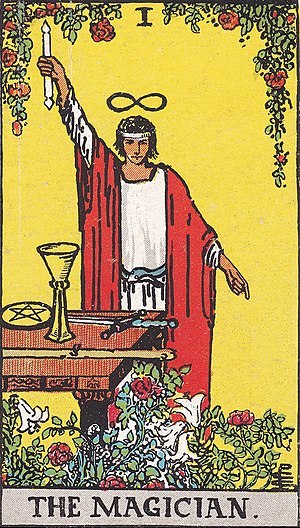

The magician is signaling with his hands As Above, So Below and is haloed by the sign for infinity above. A pentagram lies to the left, depicting the tie to the mystic world. It's no accident that we have Prospera referred to as a magician with her gentle words; hinting at her significance through Mercury (god of communication and trickery) and the hermetic principle. She is the Magician. And an argument can be made that Suletta is also a magician (witch) who inadvertently influences rather than manipulates. But that line of thought is for another day
The Sabbatic goat Baphomet is another Symbol of As Above, So Below


They are a sign of a perfect union of opposites; Man/Beast, Female/Male, Dark/Light, etc. All while bearing Mercury's caduceus and mirroring the magician. Note the pentagram and torch pointed to the sky as the Magician does. As Above, So Below. The words on its arms are Solve (dissove) Coagula (coagulate). An alchemical principle that means to create something new, you must dissove what came before. The End must come before the Beginning. The Beginning must come before the End. A connected cycle.
Ragnarok is an obvious use of this concept but it also exists in Greek myth; Cronos who overthrew his father Uranus who was overthrown by his son in return. What has happened will happen again.
Notrette, the Hermetic Alchemist
This is more on the speculation side of things but considering ep23 and soft confirmation she resides in the GUND nexus and even more of a genetic genius than expected; let's assume she's the one who created Suletta, the 12th key.
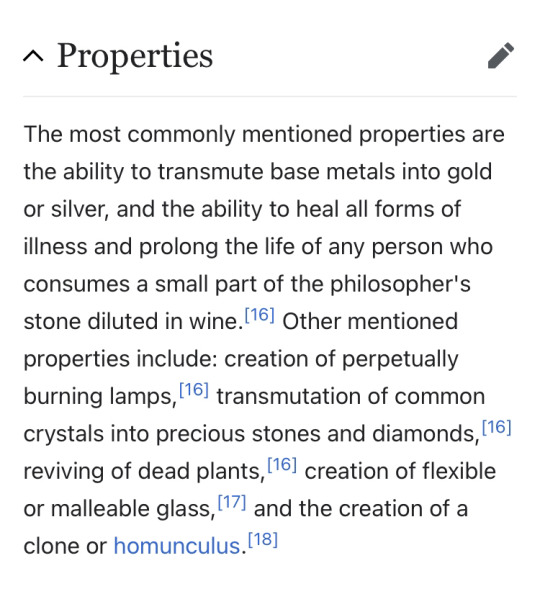

In Alchemy, there exists something called the philosopher's stone. FMA fans are very familiar but in layman's terms it's the holy grail of alchemy. And one of the boons is the ability to create a clone/homunculus. Considering QZ, the ability to unnaturally extend life is similarly on the nose. The 12 keys of Basil Valentine is an alchemical text by which you can create the philosopher's stone
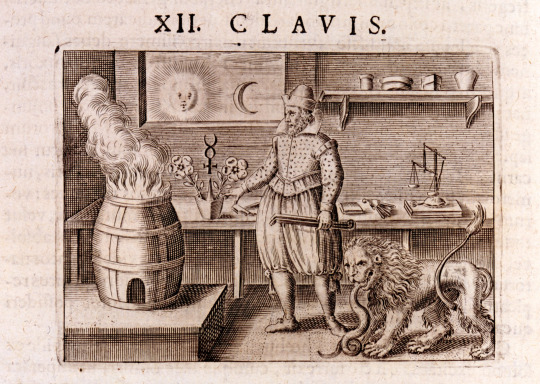
This is the image for the twelth and final step. Twelfth Key. Inside a laboratory an alchemist stands with tongs in his left hand, while with his right he points to a triangular crucible on a bench behind him, with two rose-like flowers growing out of it and the symbol of Mercury above it. On the left is a barrel-like furnace from the top of which flames emerge. On the right a lion devours a snake. Through an open window behind, the Sun and Moon are seen.
Mercury's symbol and 12th key are undeniably Suletta but the Snake and Lion are Shaddiq and Guel. The Moon is Nott (Notrette) and the Sun is her child Dagr (Miorine)
We are meant to associate both Notrette and Prospera as Hermetic Alchemists, and the pursuit of their craft has led to the events of GWitch and the perpetuation of numerous cycles. As Above, So Below.
I do find it intriguing that the stone is said to be not one, but two. A red stone and a white stone. It's not hard to equate our girls to both. After all, they too are a perfect union of opposites

#As above so below so below as above#sometimes this show is too subtle for its own good#anyway why would you waste the as above so below suit on lauda#g witch#suletta mercury#miorine rembran#gundam witch from mercury#g witch spoilers#analysis and speculation#prospera mercury#the witch from mercury
146 notes
·
View notes
Text
Eva + matching stones (according to their eye colour)
memphis - onyx / swenett - cyanite / hermopolis - jade / thebes - amber




#romance club#song of the crimson nile#rc eva#rc evthys#rc song of the crimson nile#btw had to tweak memphis eva's outfit since the black one won't show the onyx😭
58 notes
·
View notes
Text

Relief Depicting the Nurse Tia - Met Museum Collection
Inventory Number: 1985.328.5
New Kingdom, Amarna Period, Dynasty 18, ca. 1353–1336 B.C.
Location Information: From Egypt; Probably originally from Amarna (Akhetaten); Probably from Middle Egypt, Hermopolis (Ashmunein; Khemenu)
Description:
The block evokes a scene of the king before a crowd. On the right, an elegant hand dangles alongside the thigh of a royal male, surely Akhenaten. Behind him is a woman labeled "the nurse of the king’s daughter Ankhesenpaaten, Tia." Tia faces to the right and holds small loaves to cajole the restive young princess, whose garment is just visible on the far right where she stands for the court ceremony.
#Relief Depicting the Nurse Tia#nurse tia#new kingdom#new kingdom ap#dynasty 18#amarna#akhetaten#middle egypt#hermopolis#ashmunein#khemenu#met museum#1985.328.5#upper egypt#womens hair and wigs#NKAPWHW
0 notes